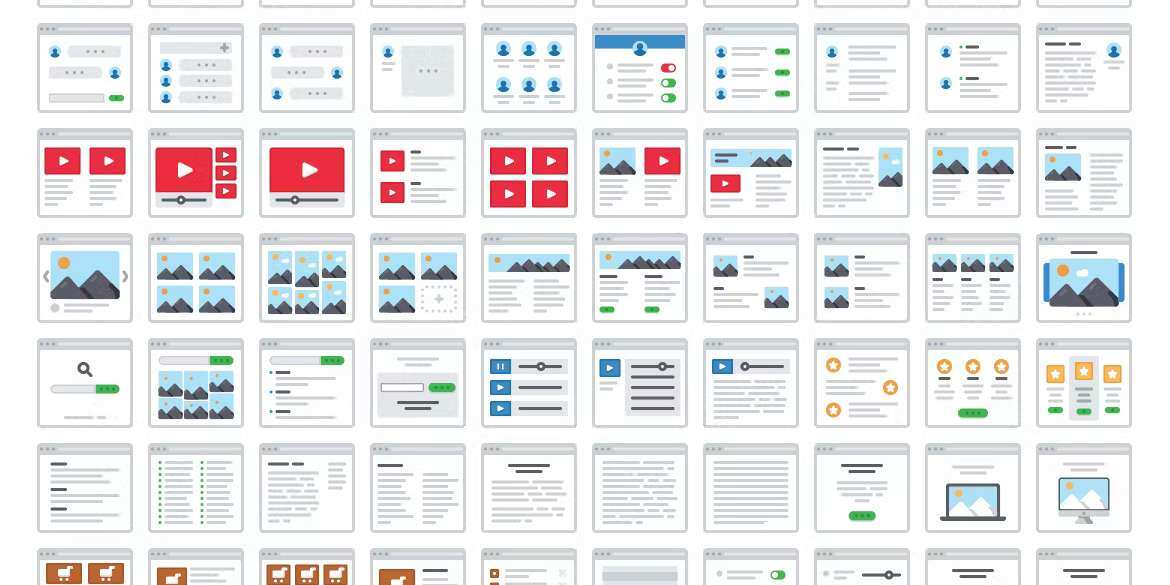Creating a brand identity is critical for startups. It defines the company's image, values, and how it communicates with its target audience. It’s vital to setting the business strategy and culture to resonate with staff and customers.
Branding translates across the organisation through business cards, email signatures, company website and social media. Here are key steps to create a brand identity for a startup:
Step 1: Define Core Values and Mission
Identifying core values for a tech startup involves deep reflection on the principles that guide the company's
- behaviour
- decision-making
- and culture
Core values are the essence of a company's identity and provide a framework for consistent action and a cohesive work environment. For a technology and innovation-driven business, values such as Quality, Creativity, Leadership, Accountability, and Measurement are often crucial to fostering a culture of innovation.
These values encourage excellence, individuality, trust, commitment to continuous improvement and data-driven strategies. Additionally, values like:
- Transparency
- Customer focus
- Integrity
- Respect
- Diversity
- Innovation
- Passion
- Recognition
- Growth
- Curiosity
- Personal development
- Teamwork
- Giving back
are common across successful tech companies and contribute to a positive work culture.
Creating a mission statement for a startup is a critical step in defining its purpose, values, and objectives, serving as a compass for the company's direction and decision-making processes. A well-crafted mission statement succinctly articulates its raison d'être—why it exists—and outlines the unique value it aims to provide to its customers, distinguishing it from competitors. It should be inspiring, reflecting the startup's aspirations and the impact it seeks to make in the market or community.
The process involves engaging with the initial team to distil the startup's essence, drawing inspiration from successful companies and avoiding common pitfalls such as vague or uninspiring language. Key elements include stating the startup's purpose, its core capabilities, and how it differentiates itself, all while being clear, motivational, and reflective of the company's intended legacy. This statement is not static; it should evolve as the company grows and its market context changes, ensuring it remains relevant and resonant with employees, customers, and stakeholders.
Step 2: Develop Your Unique Value Proposition (UVP)
Establishing a Unique Value Proposition (UVP) is pivotal in branding for startups as it differentiates them in a crowded market by clearly communicating the unique benefits and value they offer to their customers. A UVP articulates why a startup's product or service is preferable over competitors, focusing on specific advantages that resonate with the target audience.
When creating a UVP, businesses should first define their target customer and deeply understand their needs and pain points. Analysing the competition is crucial to identify gaps in the market or aspects that are not fully addressed by existing solutions.
The UVP should highlight what makes the startup's offering unique and desirable, such as innovation, quality, price, or customer service, ensuring it is relevant and delivers quantifiable value to the customer.
Crafting a compelling UVP involves distilling these insights into a clear, concise statement that is prominently featured in branding materials and across communication channels. This strategic messaging helps attract and retain customers by making a memorable promise of value that sets the startup apart.
Step 3: Craft Your Brand Story
Narrative building in branding is a strategic approach that goes beyond the confines of a singular brand story, encompassing a broader, more dynamic framework that integrates the brand's mission, vision, and values with the experiences and voices of its customers and community.
Unlike a brand story, which typically has a beginning, middle, and end, a brand narrative is flexible and ongoing, allowing for the incorporation of multiple perspectives and the evolution of the brand over time. It is a cohesive, living document that reflects not only the company's history and purpose but also the ongoing relationship between the brand and its stakeholders.
Crafting a strong brand narrative requires consistency across all elements of the business, from the tone of voice used in communications to the visual design elements like logos and colour schemes.
It also involves engaging customers in the storytelling process, encouraging them to share their experiences and incorporating user-generated content into the brand's narrative, thus creating a sense of community and shared identity.
By doing so, a brand can foster a deeper emotional connection with its audience, turning passive consumers into active brand advocates and differentiating itself in a competitive market. Share the journey and motivations behind your startup to create a connection with your audience.
Emotional connection in branding is a powerful tool that enables companies to forge deep relationships with their customers, leading to brand loyalty and advocacy. By tapping into the emotions and desires of their target audience, startups can create a memorable brand experience that resonates on a personal level.
This connection is achieved through various strategies, such as demonstrating good listening skills to understand customer needs, offering a sense of belonging and community, and aligning the brand's values with those of its customers.
Emotional branding can evoke feelings of joy, love, nostalgia, or excitement, which are instrumental in crafting a brand identity that customers feel drawn to and want to incorporate into their own lives.
By consistently delivering on their promises and maintaining authenticity, startups can build trust and an emotional bond with their audience, which is often more influential than traditional marketing tactics.
This emotional bond not only increases customer lifetime value but also encourages word-of-mouth recommendations, significantly enhancing the brand's reach and impact.
Step 4: Choose a Brand Name
Selecting a brand name for your fintech startup is a crucial step that sets the tone for your brand identity, market positioning, and customer perception. A compelling name should be memorable, easy to pronounce, and reflect the innovative nature of your fintech services.
It's beneficial to explore different types of names, such as invented names (e.g., Brex, Marqeta), combined names (e.g., PayPal, Credit Karma), or existing names that are repurposed to fit the fintech context.
The process involves a creative brief to define your brand's mission, target audience, and the emotions you want the name to evoke. Brainstorming sessions, leveraging tools like financial dictionaries or idioms, and considering abstract ideas can generate a list of potential names.
It's essential to ensure the name stands out among competitors, aligns with your brand's personality and values, and resonates with your target audience. Testing the name for memorability, pronounceability, and legal availability, including domain names, is critical to avoid future rebranding challenges.
Ultimately, the chosen name should encapsulate the essence of your fintech startup, making a strong first impression and fostering an emotional connection with your customers.
Step 5: Design a Visual Identity
Logo design for tech startups is a critical aspect of establishing a strong brand identity, as it often forms the first impression for potential customers and investors. A well-designed logo should be timeless, unique, and capable of conveying the startup's message and values at a glance.
It should encapsulate the essence of the company, reflecting its innovative spirit and technological prowess while remaining simple enough to be memorable and easily recognizable.
The design process is not a quick or simple task; it requires careful consideration of various elements, including color, typography, and imagery, and often involves an iterative process with multiple revisions to achieve the perfect balance between innovation and simplicity.
A logo must also be versatile, looking equally effective on a variety of platforms and scales, from a mobile app icon to a large billboard.
Given the importance of a logo in the competitive tech industry, startups may benefit from investing in professional design services to ensure their logo accurately represents their brand and stands the test of time.
The importance of colour and typography in branding a tech startup cannot be overstated, as both elements play a crucial role in shaping the brand's identity and influencing customer perception. Colour, for instance, is a powerful communication tool that can affect mood and behaviour, making it essential for companies to choose them carefully to convey the right message and evoke the desired emotional response.
Blue, often associated with trust and dependability, is a popular choice among tech companies, reflecting their commitment to innovation and reliability.
On the other hand, typography, the art of arranging type, significantly impacts how a brand's message is received. It serves key functions such as recognition, differentiation, communication, and expression, making it vital for startups to select fonts that align with their brand identity and values.
The right typography can set the mood, convey meaning, and even change perceptions, thereby enhancing the brand's visual appeal and effectiveness in communicating its unique value proposition.
Together, colour and typography form an integral part of a tech startup's branding strategy, influencing how the brand is perceived and remembered by its target audience.
Developing consistent branding materials for tech startups is essential for establishing a recognizable and trustworthy brand identity. Consistency across all branding materials, such as the company's logo, colour palette, typography, and messaging, helps to increase brand awareness and customer trust.
This uniformity ensures that customers and potential clients can easily identify the startup's products or services, creating a memorable impression that can lead to increased sales and improved customer loyalty.
To achieve this, startups should start with a strong brand identity and use a style guide to maintain visual and communicative consistency across all marketing materials, including digital applications like websites and social media and physical items like stationery and product packaging.
The tone of voice should also be consistent, reflecting the brand's personality and values in every communication. By meticulously managing these brand assets and ensuring they are applied uniformly across all platforms and touchpoints, tech companies can build a cohesive brand experience that resonates with their audience and stands out in the competitive tech landscape.
Step 6: Build a High-Conversion Website
Website as a brand hub. For tech companies, a website serves as the central hub of their brand's digital presence, encapsulating their brand identity, values, and offerings in a single, accessible location. It's where powerful product descriptions, compelling case studies, and authoritative opinion pieces come together to showcase a company's competence and expertise.
A well-designed website not only communicates the startup's story and builds trust with the target audience but also differentiates the company from its competitors by presenting a clear and consistent brand message.
It's a platform where emotional connections are forged through visual identity, including colour schemes and typography, which are carefully chosen to resonate with the industry and the brand's unique personality.
As the primary touchpoint for customers, investors, and partners, the website must be optimized for conversion, ensuring that visitors are not only engaged but also guided towards making a purchase or taking the desired action.
In essence, the website is the embodiment of the brand's strategy, serving as a dynamic showcase of the tech company's innovative solutions and a testament to its potential for growth and success in the digital landscape.
Step 7: Align Brand Voice with Audience
Developing a brand voice for a tech startup is a strategic endeavour that serves to differentiate the company from competitors, engage with the target audience, and reflect the brand's values and personality.
A distinctive brand voice helps a tech startup stand out in a crowded market by providing a unique and consistent way of communicating that is instantly recognizable to customers. It allows them to connect with its audience on a deeper level, using language and messaging that resonates with their interests, needs, and pain points.
By aligning the brand voice with the company's core values and mission, it ensures that every piece of content, from website copy to social media posts, authentically represents what the brand stands for.
This consistency in communication builds trust and fosters a loyal customer base, as people are more likely to engage with and support brands that they perceive as genuine and aligned with their own values.
In essence, a well-crafted brand voice is not just about the words used; it's about creating a personality for the brand that captivates and retains the attention of the target audience, driving demand and sales.
Step 8: Create a Tagline
Crafting a memorable tagline for a SaaS fintech startup involves distilling the essence of the company into a concise, impactful phrase that captures the innovative spirit and financial expertise of the brand. The tagline should be unique, avoiding generic statements that could apply to any competitor.
It must be simple and concise, ideally under five words, to ensure it is easily remembered and understood by the target audience. The tagline should also be timeless, avoiding trendy language that may quickly become outdated, and consistent with the overall branding to reinforce the brand identity.
Focusing on the benefits to the customer rather than the company's features can create a stronger brand association and emotional connection. For a SaaS or fintech startup, the tagline might emphasize aspects like security, innovation, ease of use, or financial empowerment.
An example could be “Streamlining Finance, Empowering Growth”, which conveys its role in simplifying financial processes and supporting the customer's success.
It's important to validate the tagline internally to ensure it sets realistic expectations and fulfils the brand's promise.
Step 9: Conduct Market Research
Competitor analysis is invaluable for tech startups in branding, as it provides critical insights that can shape a startup's strategic positioning and brand identity. By understanding the competitive landscape, companies can identify their unique selling proposition (USP) and differentiate themselves in a crowded market.
This analysis reveals competitors' strengths and weaknesses, offering opportunities for startups to capitalize on unmet needs or areas where competitors fall short.
It also informs product development, marketing strategies, and the brand voice, ensuring that the business' offerings and messaging resonate with the target audience and stand out from the competition.
Furthermore, ongoing competitor analysis helps them stay agile, adapting to market changes and emerging trends to maintain a competitive edge.
Ultimately, a thorough competitor analysis enables tech startups to build a strong, distinctive brand that captures the attention of customers and drives long-term success.
Step 10: Collaborate with Professionals
Seek expertise. Partnering with a branding agency offers tech startups significant advantages in developing a distinctive and cohesive brand identity. A branding agency brings a deep understanding of market trends and consumer behavior, which is crucial for a startup aiming to establish a strong position in the competitive tech landscape.
This expertise allows startups to craft a brand that not only stands out but also resonates deeply with their target audience, ensuring the brand's messaging and visual identity are perfectly aligned with market expectations and customer needs.
Additionally, a branding agency can provide a comprehensive suite of services, from logo design and visual identity to brand strategy and messaging, ensuring a holistic approach to brand development.
This partnership enables startups to leverage the agency's experience and creative talent to build a brand that captures the essence of their business and appeals to customers, setting the foundation for long-term success and customer loyalty.
Conclusion
A strong brand identity is more than just a logo; it encompasses your startup's entire experience. It's about the values, mission, story, and visual elements that collectively communicate who you are to your stakeholders. By following these steps and ensuring consistency across all touchpoints, startups can build a powerful brand identity that resonates with their audience and stands out in the competitive market.
Need help with your branding, UX or webdesign? Reach out to our team who would be happy to help you achieve your goals.




